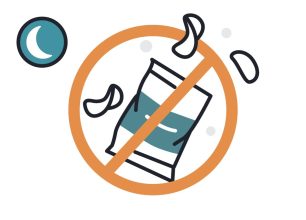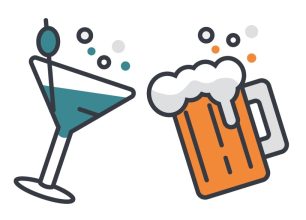In a world flooded with fad diets, gimmicky workout plans, and quick fixes, the notion of “eating to lose weight” often gets muddled in a sea of contradictory advice and unsustainable practices. Losing weight is a common goal for many of our patients (along with reducing pain, improving mobility, living longer, and just simply feeling better), but the path to achieving weight loss isn’t always clear. Instead of succumbing to the latest diet craze, adopting a 90/10 approach to eating healthy foods can lead to long-term success and overall well-being while allowing you to still eat your favorite things occasionally.
Understanding the 90/10 Rule
At its core, weight loss comes down to a simple equation: calories in versus calories out. To shed excess pounds, you must consume fewer calories than your body expends. However, this doesn’t mean starving yourself or depriving your body of essential nutrients. Instead, it’s about making informed choices and creating a balanced eating plan that supports your health and weight loss goals. The 90/10 rule is a lifestyle approach; 90% of your diet should be clean, healthy foods or drinks then the other 10% you can enjoy without guilt. One of the many things patients love about Prescribe FIT is that oftentimes, you can still eat your favorite things and still see meaningful results!
Emphasizing Nutrient-Dense Foods
The foundation of any effective weight loss strategy is prioritizing nutrient-dense foods. These include fruits, vegetables, lean proteins, whole grains, and healthy fats. Not only are these foods rich in essential vitamins, minerals, and antioxidants, but they also help keep you feeling full and satisfied, making it easier to stick to your calorie goals.
Buy More Colorful Groceries
Success in eating for weight loss often hinges on planning and preparation. Stock your kitchen with healthy options and plan your meals and snacks in advance. Often, healthier food options are more colorful than unhealthy options. If it’s white (or lacking color) like sugar, white-flour pasta, and even white rice, it’s probably over-processed and therefore lacking nutrients. Natural, unprocessed white foods, such as onions, cauliflower, turnips, white beans, and white potatoes don’t fall into the same category. By buying colorful foods at the grocery store and taking the guesswork out of mealtime, you can avoid impulse eating and make choices that align with your goals.
Portion Control and Mindful Eating
Portion control plays a crucial role in managing calorie intake. It’s easy to overeat when portions are oversized or when we’re distracted while eating. Practicing mindful eating involves slowing down, paying attention to hunger and fullness cues, and savoring each bite. By tuning into your body’s signals, you can avoid mindless snacking and better regulate your food intake.
The Importance of Hydration
Staying hydrated is often overlooked but is essential for overall health and weight loss. Sometimes our bodies mistake thirst for hunger, leading to unnecessary calorie consumption. Drinking an adequate amount of water throughout the day can help curb cravings, boost metabolism, and support proper digestion.
Consistency and Patience
Above all, remember that sustainable weight loss takes time, consistency, and patience. There will be ups and downs along the way, but staying focused on your long-term health and well-being is key. Celebrate small victories, learn from setbacks, and keep moving forward with determination and resilience.
Eat Right 90% of the Time to Succeed
In the quest to lose weight, adopting a sensible approach to eating is paramount. By focusing on nutrient-dense foods, buying more colorful groceries, practicing portion control, staying hydrated, and planning ahead, you can achieve sustainable results that go beyond mere numbers on a scale. Remember, it’s not just about how much food you eat, but how you nourish your body and mind for a healthier, happier you.
Published on January 22, 2024

